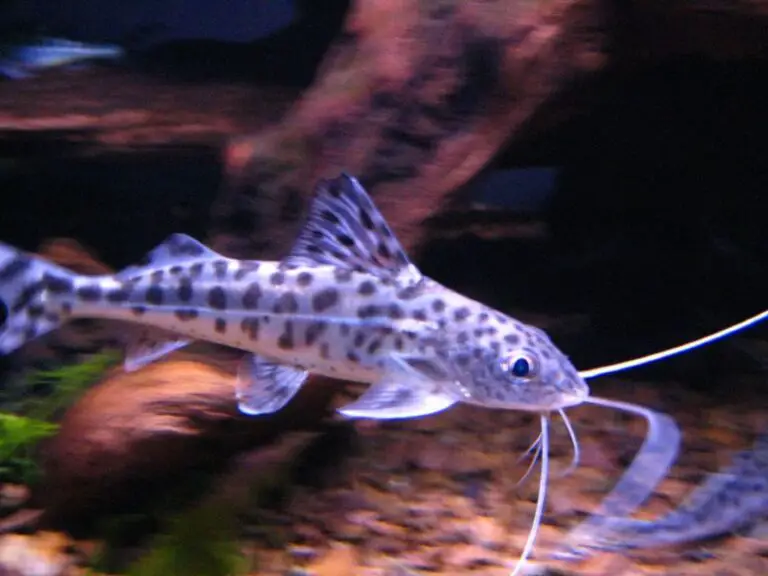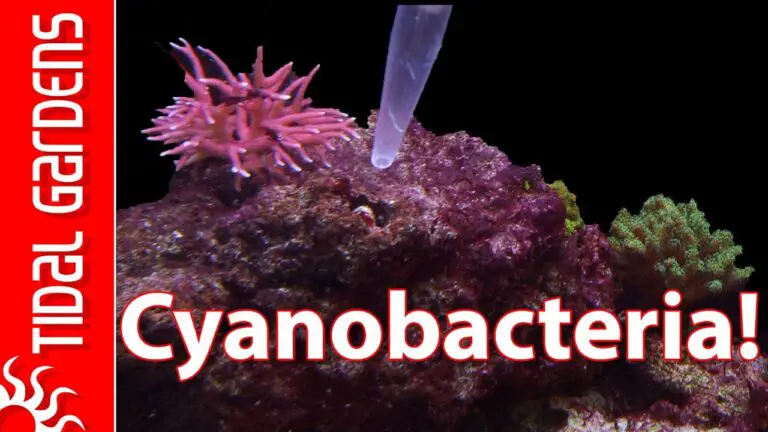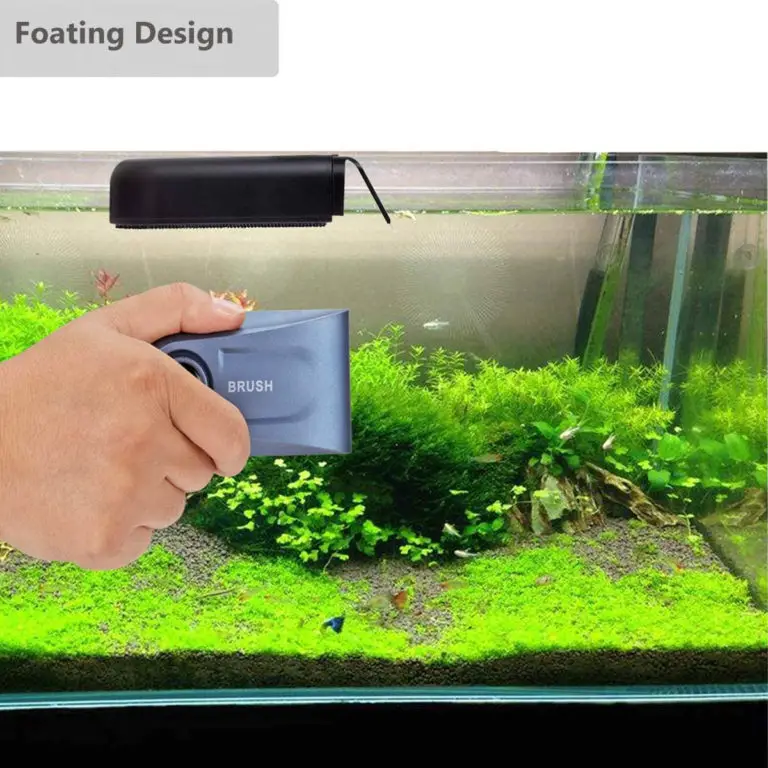What Eats Biofilm in Aquarium?
Biofilm in an aquarium is a thin layer of organic matter that forms on the surface of tanks and equipment. It provides food and habitat for various species of bacteria, fungi, protozoa, and microorganisms. Biofilm can be eaten by many aquatic animals including snails, fish, shrimp, crabs, worms and even some plants.
These organisms graze on the biofilm by scraping it off surfaces with their mouths or feet. In addition to these grazers some species such as plecostomus (aka suckerfish) have evolved specialized sucking organs which allow them to vacuum up large amounts of biofilm in one go. Other predators like frogs may also eat small crustaceans living within the film while larger fish may consume whole colonies or films at once when they become available.
Biofilm can be an issue in aquariums, as it is made of organic matter that accumulates on the walls and other surfaces.
Fortunately, there are several species of fish and invertebrates that feed off biofilm. These include plecostomus catfish, shrimp, snails, and various cichlids.
They will help keep your tank clean by eating away at any existing biofilm while also providing a natural source of food for them.
Additionally, adding oxygen to the tank can help reduce the amount of biofilm present by breaking it down faster than what would occur naturally in the system.
What Fish Eat Biofilm?
Fish that inhabit freshwater and saltwater environments both consume biofilm as part of their natural diet. Biofilm is made up of microorganisms, including bacteria, fungi, and algae, that attach themselves to surfaces in water. This provides an ideal food source for fish due to its high nutrient content.
Fish can also eat larger pieces of biofilm or feed on the smaller organisms within it. In addition to providing sustenance, consuming biofilms helps cleanse a body of water by removing excess organic matter and pathogens from the environment.
How to Prevent Biofilm in Aquarium?
Biofilm is a layer of bacteria and other organisms that can form in an aquarium, resulting in poor water quality, cloudy water, and the release of toxins. To prevent biofilm from forming, it’s important to regularly clean your aquarium by removing debris on surfaces such as substrate or rocks.
Additionally, performing regular partial water changes helps to reduce the accumulation of organic matter in the tank which can lead to biofilm formation.
Finally, adding beneficial bacteria products like Bio-Spira will help keep your tank healthy by providing a natural balance between good and bad bacteria.
How to Grow Biofilm in Aquarium?
To grow biofilm in an aquarium, start by introducing beneficial bacteria to the tank. This can be done through seed cultures or by adding a natural source of bacteria, such as live plants.
The next step is to add organic matter for the bacteria to feed on, such as decaying plant material or small pieces of uneaten food.
Finally, adjust the water temperature and light levels accordingly so that the biofilm has ideal conditions in which to thrive and develop over time. With proper care and maintenance, your aquarium will soon have a healthy thriving biofilm population!
Is Biofilm Good Or Bad Aquarium?
Biofilm can be both good and bad in an aquarium. Biofilm is beneficial as it provides a natural food source for many species of fish, protects them from toxins, helps maintain pH balance, and allows for the growth and colonization of beneficial bacteria.
However, if biofilm becomes excessive or unbalanced it can lead to poor water quality, decreased oxygen levels, algal blooms which decrease light penetration into the tank and increased risk of disease among your fish population.
Biofilm on Wood in Aquarium
Biofilms are a natural occurrence in both freshwater and saltwater aquariums, however they can be more of an issue when it comes to wood. Wood is naturally porous and can harbor these bacterial colonies, which can create problems if not managed properly. If left unchecked, biofilm on the wood will provide a nutrient source for other unwanted organisms such as algae or fungi.
To prevent this from happening it is important to regularly clean the wood with hot water and vinegar solution and replace any pieces that become too heavily colonized with bacteria.
Biofilm on Aquarium Heater
Biofilm is a thin layer of bacteria, fungi and other microorganisms that can form on the surfaces of aquarium heaters. The biofilm can reduce the effectiveness of an aquarium heater by preventing it from properly transferring heat to the water in your tank. To minimize this buildup, you should regularly clean and inspect your heater for any signs of biofilm growth.
Additionally, adding some beneficial bacteria to help keep levels balanced will also help prevent biofilm formation.
Biofilm in Cycling Tank
Biofilm is a slimy layer of organic material that can form on the walls and other surfaces within cycling tanks. This biofilm can be composed of bacteria, fungi, protozoa and algae. It can create an environment where organisms are encouraged to grow and thrive leading to increased tank maintenance requirements due to clogging or biofouling from build-up over time.
To reduce the potential for biofilm formation in cycling tanks it’s important to regularly clean and sanitize them with appropriate cleaners or disinfectants as needed.
What Causes Biofilm in Aquarium?
Biofilm is a slimy layer of bacteria that forms on the surfaces of an aquarium and can cause cloudy water, discoloration and poor filtration. It’s caused by organic material (such as decaying food or fish waste) breaking down in the water column and releasing nutrients which provide energy for bacterial growth. Biofilm is also encouraged when oxygen levels are low, pH levels are too high or fluctuate frequently, or if there isn’t enough flow to keep it from forming.

Credit: www.reddit.com
What Aquarium Fish Eat Biofilm?
Aquarium fish, like all other animals, need to eat in order to survive and thrive. One type of food they can eat is biofilm. Biofilm is a collection of bacteria and microscopic organisms that form on surfaces in water environments such as aquariums.
Fish love to feed on the tiny particles that make up biofilm because it provides them with essential nutrients and vitamins for their health and growth. Some common species of fish that consume biofilm are tetras, cichlids, livebearers, catfish, and loaches. Most bottom-dwellers also enjoy eating biofilm by sucking it off the rocks or substrate with their specialized mouths.
In addition to being an important source of nutrition for your aquarium inhabitants, consuming biofilms helps keep your tank clean by limiting bacterial growth which can lead to algae blooms or cloudy water conditions if left unchecked.
How Do I Get Rid of Biofilm in My Aquarium?
Biofilm can be a pesky problem in aquariums. It appears as a slimy, slippery film on the surfaces of rocks, filter media, decorations and other hard surfaces that are submerged in water. This film is caused by bacteria and other microorganisms that have colonized these areas.
To get rid of biofilm in your aquarium, there are several steps you can take to keep it from forming or remove it once it’s already present.
First, make sure your tank is properly maintained with regular partial water changes every two weeks or so and adequate filtration for the size of the aquarium.
Secondly, if you notice any visible signs of biofilm in your tank then use an algae magnet to scrape off as much as possible before starting any chemical treatments; this will help prevent them from entering into the filters which could cause damage.
Finally, use an anti-biofilm treatment like potassium permanganate or hydrogen peroxide to break down existing colonies while also preventing new ones from forming just be sure to follow all instructions carefully when using these chemicals!
Will Snails Eat Biofilm?
Snails are scavengers and will eat just about anything that they can find. This includes biofilm, which is a slimy substance composed of bacteria, fungi, protists and other microorganisms. Biofilm is found on surfaces such as rocks or the sides of aquariums and it can provide a source of nutrition for snails.
Snails have specialized jaws (called radulae) that allow them to scrape away at hard surfaces like rock in order to feed on things like algae or biofilm. They also secret mucus from their bodies which helps them move around and collect food particles from any surface they come across including biofilms! Snail species vary in their willingness to consume biofilm but most will happily do so if there is enough available for them to graze on.
What Eats Biofilm on Driftwood in Aquarium?
Biofilm is an important part of any aquarium, providing food and shelter for a variety of organisms. It can be found on the driftwood in your tank, but what eats biofilm on driftwood? There are many species that feed on this type of organic matter in the aquarium.
Fish such as tetras, corydoras catfish, danios and barbs all have small mouths designed for picking off morsels from rocks and wood surfaces including biofilm. Invertebrates like shrimp, snails, crabs and other scavengers also love to feast on these tasty treats. Even certain types of algae enjoy feasting on biofilm!
If you’re looking to add some additional cleanup crew members to your tank that will help keep your driftwood clean while adding diversity to it’s inhabitants then look no further than these natural aquatic cleaners!
What Feeds on Biofilm?
Biofilm serves as an easily accessible food source for many different species of organisms. Bacteria, fungi, and archaea are the primary consumers of biofilms. Bacteria can either break down complex polysaccharides found in biofilms or take advantage of the sugar released by other bacteria that have already broken down those polysaccharides.
Fungi typically feed on organic matter within a biofilm and use enzymes to break it down into simpler compounds that they can use as nutrients. Archaea also consume organic matter within a biofilm; however, they mainly rely on chemosynthesis rather than photosynthesis like some bacteria do.
Additionally, protists such as amoebas are able to ingest both bacterial cells and fungal hyphae within a biofilm through phagocytosis (engulfment).
Finally, larger organisms such as nematodes may feed directly off living or dead microbial cells from a biofilm. All these creatures work together to form a symbiotic relationship where each organism benefits from the presence of the others in order to facilitate nutrient cycling between them all.
Aquarium Biofilms: Learn About, Prevent and Eliminate
Conclusion
Overall, biofilms are an important part of a healthy aquarium environment. Although they can become problematic if left untreated, there are several different ways to combat them. Aquarium owners should look into adding scavengers such as snails and shrimp, introducing UV sterilizers for chemical filtration, and manually removing the biofilm with a toothbrush or similar tool to keep their tank clean and safe for their fish.
With the right tools and strategies in place, you can easily control your aquarium’s biofilm levels!





